Identifying Ruby-crowned Kinglet vs Golden-crowned Kinglet
Kinglets are tiny and active birds, making poor views the norm. To add to the challenge, both species have thin dark bills, similar body shapes, and similar overall color patterns. And while the close-up depictions in field guides make separating them seem pretty straightforward, some of the differences can be misleading under field conditions. The main reliable differences you should concentrate on are in the facial patterns.
Focus on the Facial Pattern
Ruby-crowned Kinglets have just a plain head and face other than pale arcs around the eye (and sometimes the red crown).
Golden-crowned Kinglets have much more dark in the face — including the eye line, down from the base of the bill, and at the border between the eyebrow and crown.
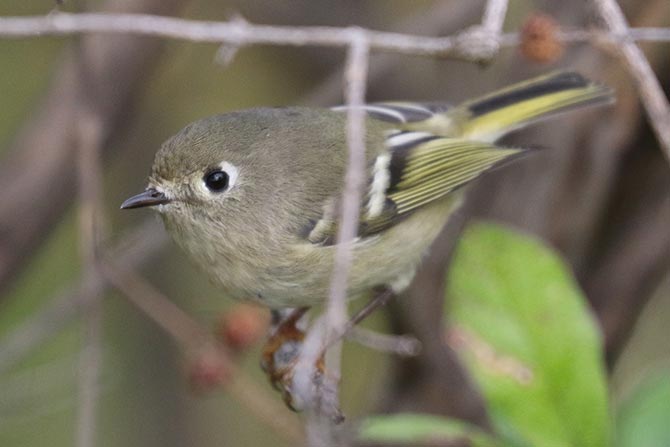
Ruby-crowned Kinglet — plain face and head
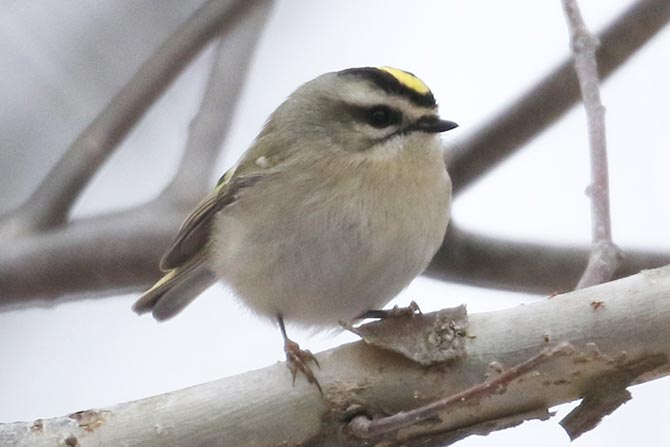
Golden-crowned Kinglet — dark markings in the face
Body Color Differences
Color differences wouldn't be my first choice of field mark for distinguishing these species, but they do slightly differ. Ruby-crowned Kinglets have a greenish or yellowish-green cast to the overall body and Golden-crowned Kinglets are more gray. Lighting conditions can affect perceived color, so be careful.
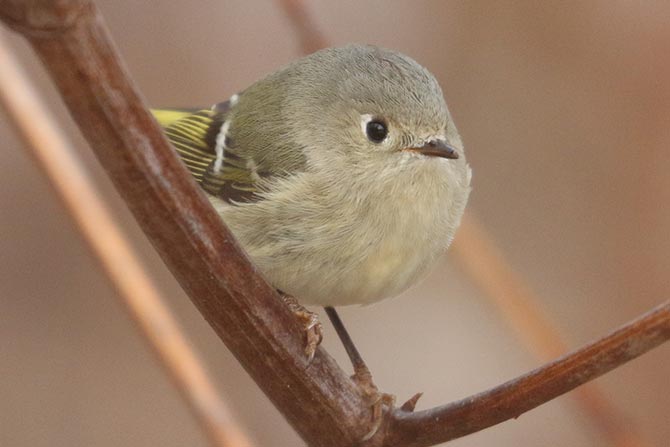
Ruby-crowned Kinglet — greener overall tones
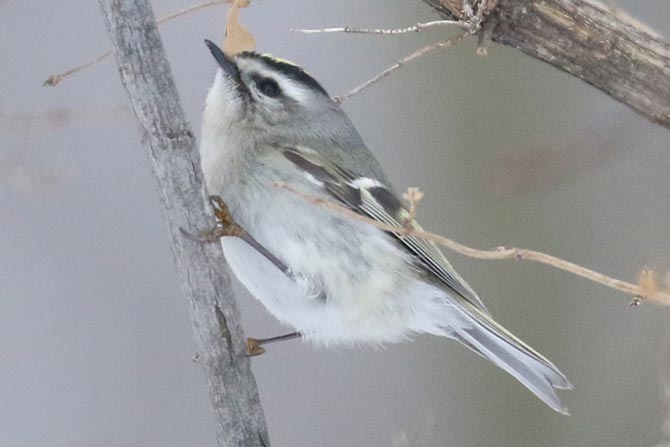
Golden-crowned Kinglet — colder gray overall tones
Crown Colors
The crown colors giving rise to their respective names are not always visible, especially on Ruby-crowned Kinglets. If they get agitated, the crown can really open up, showing bright colors.
Ruby-crowned Kinglets can have anything from no color in the crown, to a small strip of red, to a blatantly obvious red crest.
Golden-crowned Kinglets typically show a yellow crown bordered by black (other than juveniles, which have the black border but not the yellow). Some birds (often agitated males) may show a blaze orange center, which could be mistaken for "ruby" if you aren't careful. Again, that's why it's best to focus on other aspects of the head, because I've even seen experienced birders make that mistake.
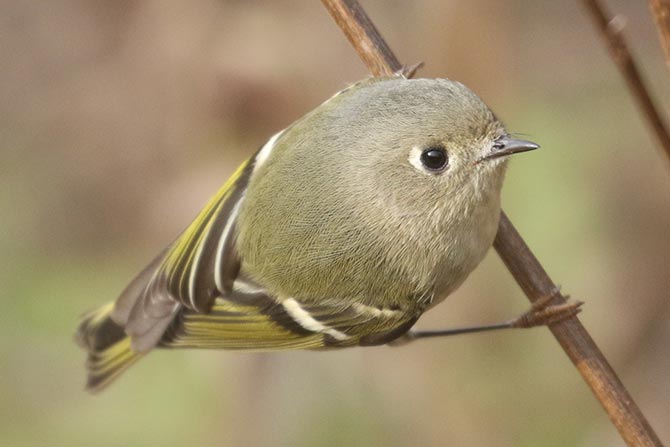
Ruby-crowned Kinglet with no red crown visible
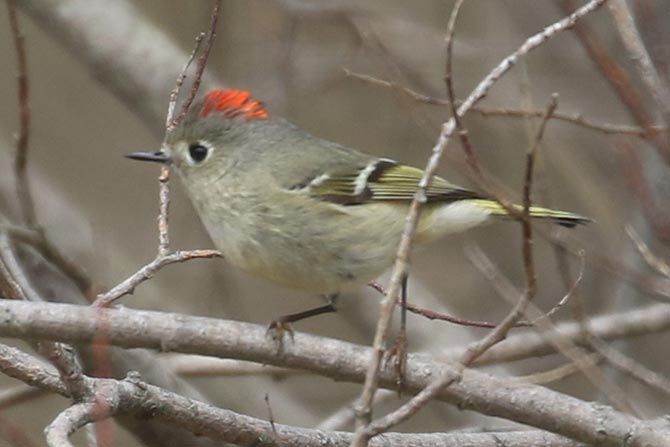
Ruby-crowned Kinglet with the red crown showing
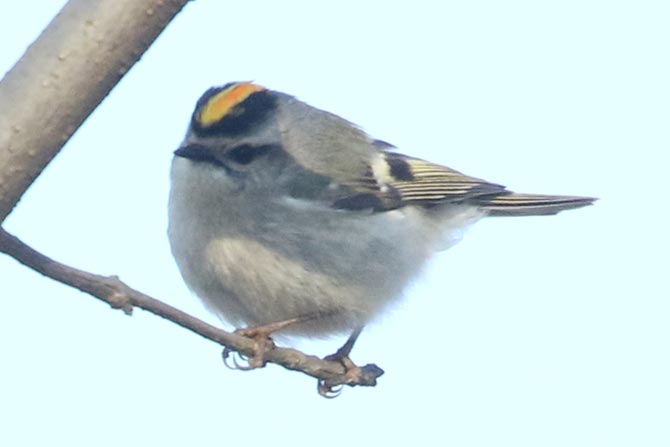
Golden-crowned Kinglet with the center of the crown showing
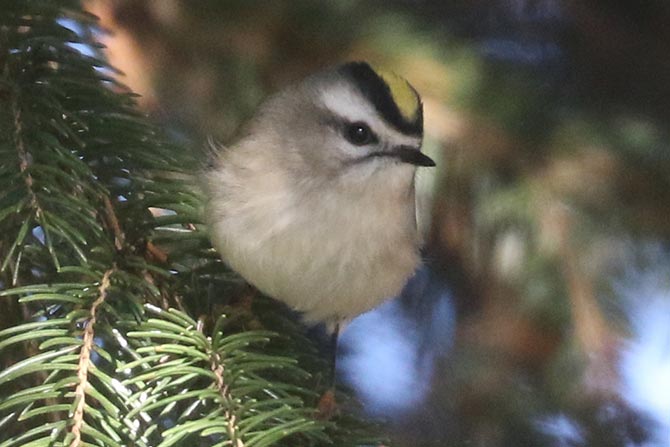
Golden-crowned Kinglet showing typical yellow crown
Video Overview
Kinglet Calls and Songs
Vocalizations can be extremely helpful for identifying kinglets. And oftentimes, hearing them is what initially tips me off to their presence. It definitely alleviates the difficulty of getting decent looks at them when you can identify them before even seeing them.
The typical call notes differ quite a bit between the two species. There's some variation, but this is what I hear most in the field:
- Golden-crowned Kinglet has a high-pitched call that is usually given three times quickly together (Example). Brown Creeper has a very similar-sounding call that is usually given once (Example).
- Ruby-crowned Kinglet has more of a chatter call (Example) that is lower in pitch (maybe close to the call notes of something like Winter Wren or Marsh Wren, but not to the extent that you would probably confuse them).
Kinglet songs are more similar to each other than the calls are, and, while they are quite variable, mainly you should focus on the ending. Both of them sort of "wind up" their song, and then:
- Golden-crowned cuts off right after the peak (Example)
- Ruby-crowned breaks off into a somewhat excessive (but also endearing) additional section that quickly jumps up and down — and feels like the sound is ricocheting around inside your brain. (Example)
Summary of Kinglet Identification
Ruby-crowned Kinglet
- Plain face with white eye arcs
- More greenish overall body color
- Red crown sometimes visible
- Chatter call
- Song ends in extra section that bounces up and down
Golden-crowned Kinglet
- Dark markings in the face and bordering the crown
- More grayish overall body color
- Yellow or orange crown bordered by black
- High-pitched call, often given in threes
- Song winds up and ends without jumping into an extra section
Confusion Species
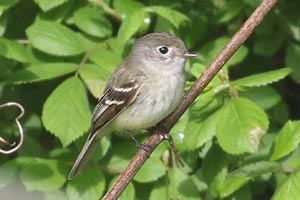
Empids
The Empidonax flycatchers (such as Least Flycatcher) are fairly similar in general color pattern to Ruby-crowned Kinglet, but the empids have a much more vertical posture compared the the horizontal posture of kinglets. The wing pattern is also a bit different, with kinglets showing a white wing bar with a thicker black bar directly behind it compared to empids' double white/buffy wing bars on darker wings. The bills on empids are also a bit larger/wider, and often show yellow.
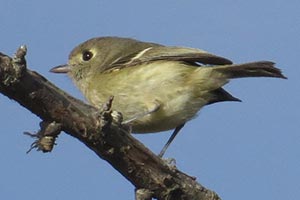
Hutton's Vireo
Ruby-crowned Kinglet and Hutton's Vireo are shockingly similar for species that aren't very closely related. Hutton's Vireo is restricted to the west coast and small portions of the southwest, so it's not really a challenge that comes up in the east. Mainly note the thicker bill, and more sturdy slate gray legs and feet on Hutton's Vireo. The specifics are out of scope for this article, but others have written about the topic if you want to learn more.
Hummingbirds
If seen well, hummingbirds and kinglets shouldn't pose any major confusion. However, it is worth noting that kinglets will often hover for short bursts, and coupled with their tiny size, there could be cause for confusion if you aren't too familiar with kinglets

Redpolls
This one wouldn't have necessarily been on my radar, but I've seen Ruby-crowned Kinglet identified as a Common Redpoll before, so just be aware that not every bird with red on the top of the head is a redpoll, and you should be good to go.
Additional Kinglet Photos
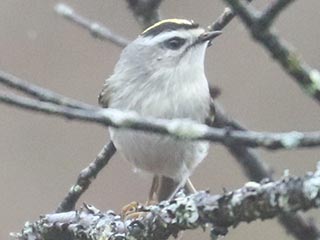
Golden-crowned Kinglet
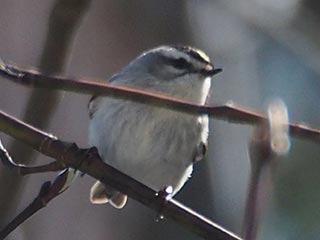
Golden-crowned Kinglet
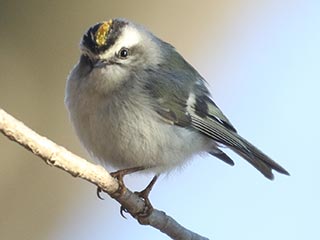
Golden-crowned Kinglet
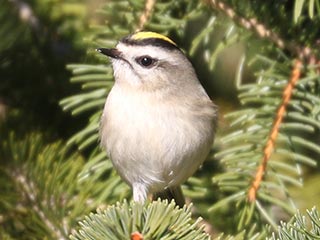
Golden-crowned Kinglet
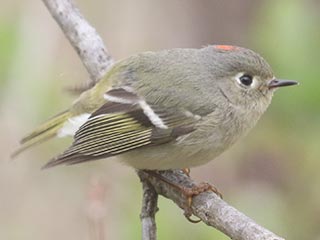
Ruby-crowned Kinglet
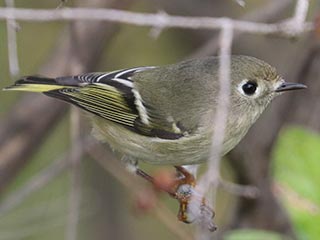
Ruby-crowned Kinglet
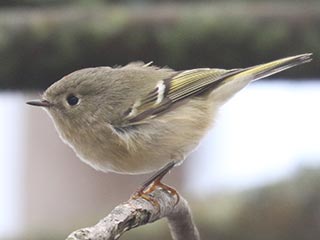
Ruby-crowned Kinglet
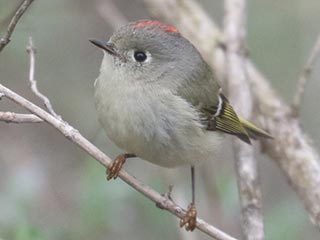
Ruby-crowned Kinglet
All photos © Bobby Brown or David Brown.
